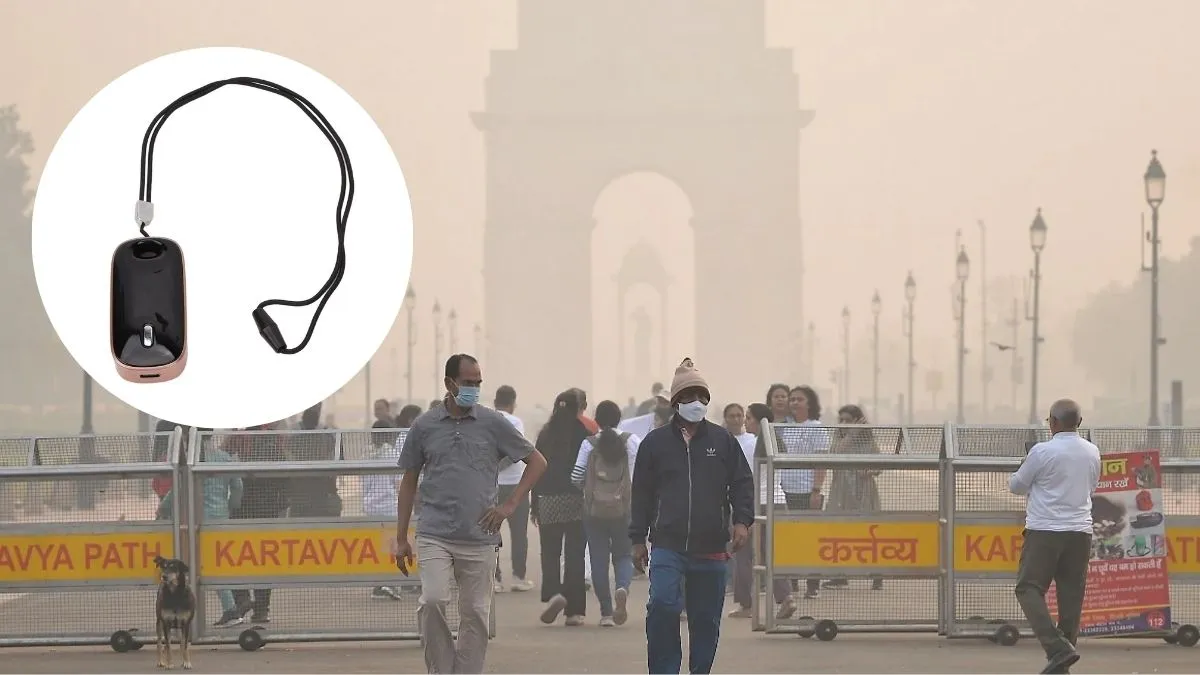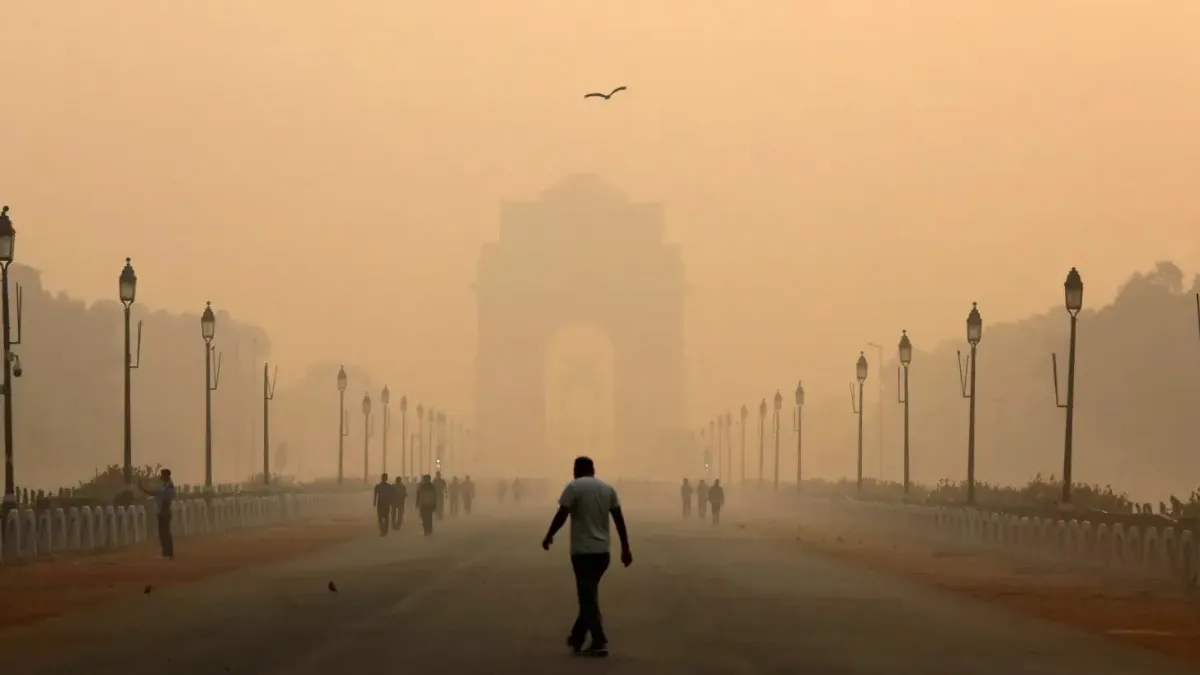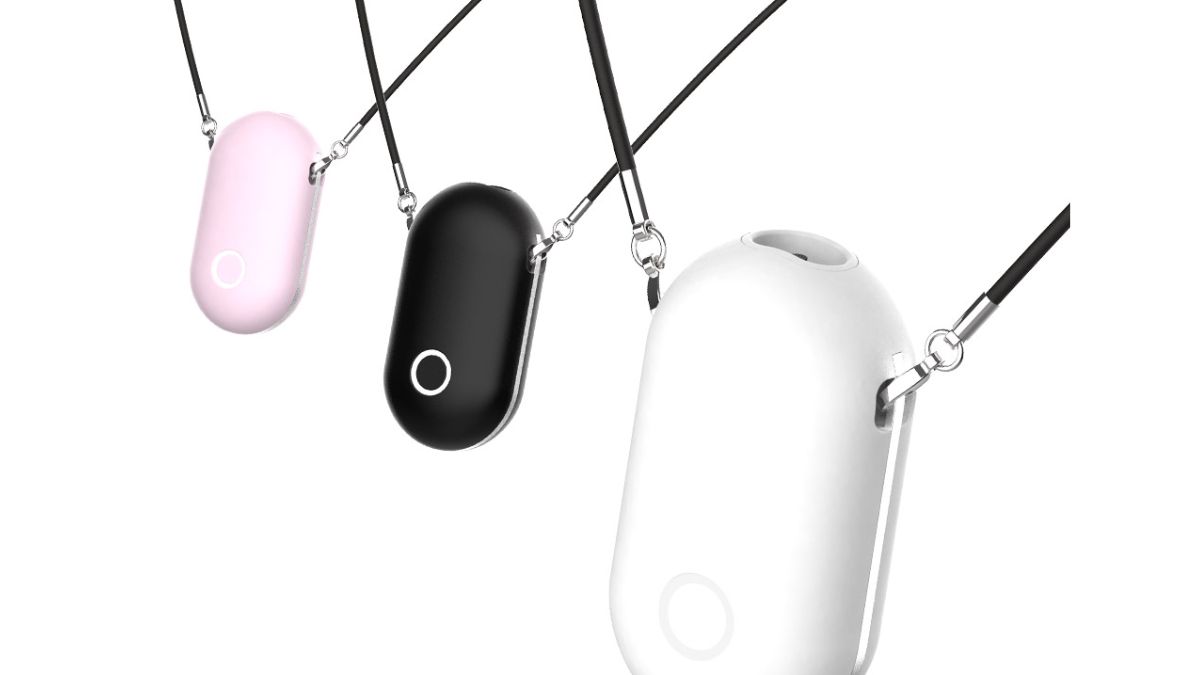
Delhi and its surrounding region have again stepped into the ‘poor’ air quality zone, triggering GRAP-1 (Stage 1) restrictions just days before Diwali. As of October 14, 2025, the Air Quality Index (AQI) in Delhi soared to 211, crossing the threshold for ‘poor’ air.
Table of Content:-
In response, the Commission for Air Quality Management (CAQM) imposed 27 pollution-control measures across NCR, including stricter dust control, regulation of vehicle emissions, and bans on waste burning. With pollution rising ahead of festive fireworks, many are turning to new gadgets like wearable air purifiers to shield themselves. But do they really help when the skies grow toxic?
What’s Happening: Delhi’s Air Quality Plummets![]()
Delhi’s AQI hitting 211 is more than just a seasonal statistic as it’s a warning. With colder nights and sluggish winds, pollution from vehicles, construction dust, burning crop stubble, and firecrackers is hanging heavy over the city. GRAP-1 means:
- Dust suppression and frequent road spraying
- Bans on open garbage burning and older vehicles
- Tighter monitoring of construction and fuel use
- Advisories for vulnerable people to limit outdoor exposure
Citizens are urged to follow the “GRAP Stage-I charter”, which includes wearing masks, staying indoors as much as possible, and avoiding strenuous outdoor activities.
ALSO READ: Weather-Proof Hair Is the New Luxury: Tips To Secure Hair Against Humidity and Pollution
Are Wearable Air Purifiers the Answer?![wearable air purifier wearable air purifier]()
As Delhi’s pollution season returns, more people are exploring wearable air purifiers. It is a device seen recently hanging from the necks of public figures like Shashi Tharoor and Shilpa Shetty. These compact gadgets promise to clean the air right where you breathe. The idea is simple: create a cleaner micro-environment for your nose and mouth, using technology that releases negative ions or small fans to filter particulate matter.
The surge in their popularity this year shows how eager residents are for any kind of protection. But do they deliver in Delhi’s extreme AQI, and will they help during Diwali’s toxic peak?
Do Wearable Purifiers Really Work?
Dr Sunil Kumar K, Lead Consultant - Interventional Pulmonology, Aster CMI Hospital, Bangalore, warns, “Wearable air purifiers can filter some particulate matter directly in your breathing zone, but their effectiveness is limited when pollution levels are severe.” Dr Sunil notes:
- Most wearable devices target PM2.5 but may not catch all harmful gases and ultrafine particles
- They do not replace face masks or staying indoors during peak hours
- There is little clinical evidence showing these devices prevent asthma, allergies, or long-term lung damage when AQI is above 200
- For vulnerable groups (children, seniors, people with heart or lung conditions), primary protection methods remain most important
Dr Sunil recommends focusing on tried-and-tested precautions:
- Wear certified N95 masks when outdoors
- Use room air purifiers indoors, especially in bedrooms and workspaces
- Keep windows shut during peak pollution, especially mornings and evenings
- Hydrate well and maintain a diet rich in fruits and antioxidants
WHO’s Perspective: Air Pollution and Health
According to the World Health Organization (WHO), “Air pollution is among the greatest environmental risks to health, causing millions of premature deaths annually.” The WHO urges governments and individuals to act together: regular air quality monitoring, strong policy enforcement, and community protection steps are critical. Read more about pollution effects and safety guidance from the WHO here.
ALSO READ: Why Are Non-Smokers Getting Lung Cancer? Expert Cites Possible Risk Factors
Conclusion
Delhi NCR’s transition into GRAP-1 with “poor” AQI should be a call for caution. While wearable air purifiers appeal to tech-savvy users, experts warn that proven measures, face masks, staying indoors, and air purifiers, do more to reduce health risks, especially with Diwali’s pollution spike looming. Listen to public advisories, keep vulnerable loved ones safer, and focus on real, effective strategies for breathing easy until the air clears.
Also watch this video
How we keep this article up to date:
We work with experts and keep a close eye on the latest in health and wellness. Whenever there is a new research or helpful information, we update our articles with accurate and useful advice.
Current Version
Oct 15, 2025 15:41 IST
Published By : Vivek Kumar

